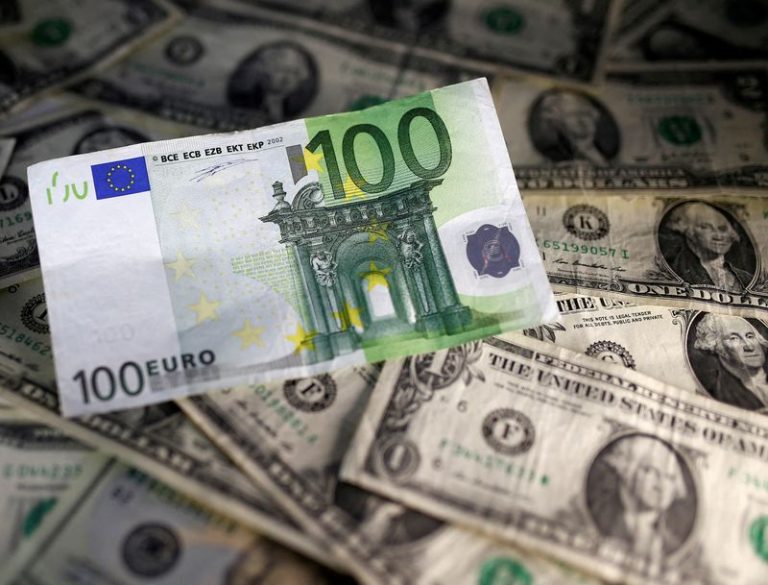By Sarupya Ganguly
BENGALURU (Reuters) – A retreating euro will remain weak in the near term, trapped between political ructions building in France and expected new U.S. tariffs early next year that are boosting the dollar’s allure, a Reuters poll of market strategists found.
While there seemed almost no prospect for a rebound soon, most strategists were nonetheless convinced the euro would not fall to parity with the U.S. dollar in the coming three months, mainly because a lot of bad news is already priced in.
With France’s government likely to collapse later on Wednesday after far-right and left-wing parties submitted no-confidence motions against Prime Minister Michel Barnier, the euro has almost no chance of recovering any of the nearly 6% loss it has suffered since late September.
Euro zone growth concerns, along with stronger prospects for more European Central Bank interest rate cuts in coming months, pushed the single currency to a two-year low of $1.03 in late November.
Interest rate futures are pricing in over 1.5 percentage point more of ECB rate reductions by end-2025, twice the amount predicted for the U.S. Federal Reserve, where expectations have been in retreat on revived domestic inflation risks.
Median forecasts of nearly 70 currency strategists in a Dec. 2-3 Reuters poll on the euro, currently trading around $1.05, showed it there in three months and around 1% lower at $1.04 in six, markedly lower than $1.10 and $1.11 in a November survey.
“There are distinct reasons why the euro is vulnerable, very much linked to structural and political issues facing both France and Germany. A pressing question is whether those problems will remain confined to France or if there will be an element of contagion,” said Jane Foley, Rabobank’s head of FX strategy.
“Germany too seems to be on the back foot, currently dealing with stagflation – a problem it has been unable to shake off – which is not a good sign for the euro.”
NO PARITY TO THE U.S. DOLLAR YET
Still, only a handful of strategists predicted in their given forecasts the euro would equal or fall below the dollar within six months. The last time it did so was between September and November 2022, where it mostly traded below the greenback.
Asked to rate the chances of the common currency reaching parity to the dollar over the coming three months, a near-60% majority, 24 of 42, said it was ‘low’.
“In the next few months, the chances of parity are relatively low given just how extreme euro bearishness already is, especially in the relative rate-cut pricing for the Fed versus the ECB,” said Erik Nelson, macro strategist at Wells Fargo (NYSE:WFC).
“While there’s a lot of things, particularly geopolitical, that could push euro below parity next year, positioning currently is already a little extreme.”
The remaining 18 said the chance of parity by end-February was ‘high’ or ‘very high’.
In a separate recent Reuters survey of economists who cover the euro zone and ECB policy, nearly 90%, 34 of 39, said President-elect Donald Trump’s proposed tariffs would significantly affect the euro zone economy in coming years.
“If Trump was to threaten to put in place higher tariffs against the EU at the start of next year or if the ECB steps up the pace of rate cuts – perhaps a larger 50 basis point cut at some point over the next three months – that would drag euro-dollar down towards and potentially below parity,” said Lee Hardman, senior currency analyst at MUFG.
A near-90% majority, 38 of 43 responding to an additional question said the U.S. dollar was more likely to trade stronger than they predicted in the coming three months than undercut those forecasts.
(Other stories from the December Reuters foreign exchange poll)

